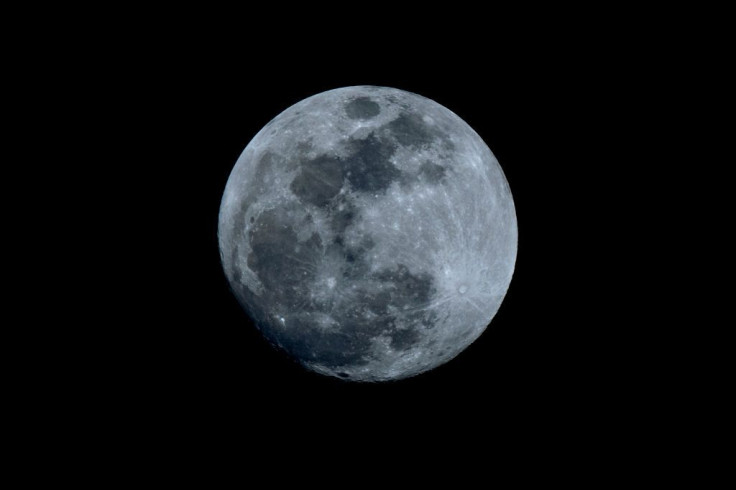Stunning Image Of Full Moon Shows Blue Titanium 'Seas' [PHOTO]

The Moon is covered in mesmerizing blue titanium "seas" in a stunning color mosaic of Earth's natural satellite.
Given the title "A Titanium Moon" by photographer Miguel Claro, the high-resolution mosaic of the full moon was created by combining images taken during the Full Hunter's Moon on Oct. 25, 2018 from the Cumeada Observatory at the Dark Sky Alqueva Reserve in Portugal. The final image reveals that the satellite has a more colorful surface than we initially believed.
As shown in the image below, some parts of the Moon are painted blue, indicating that these areas are rich in titanium, such as the dark maria or "seas" like Mare Tranquillitatis (Latin for the "Sea of Tranquility") or Mare Fecunditatis (the "Sea of Fertility"). The presence of titanium is a result of the crystallization of a huge ocean of magma that once covered the lunar surface, according to the Hawaii Institute of Geophysics and Planetology.
Color Mosaic of the Full Moon Reveals Blue 'Seas' of Titanium (Photo) https://t.co/xtxnbyD9dH pic.twitter.com/QMOsEkvqY6
— SPACE.com (@SPACEdotcom) February 18, 2019
Along the bottom of the Moon, white stripe-like features can be seen stretching across the southern lunar highlands. These seem to extend from the Tycho crater, which measures 53 miles (85 kilometers) wide. Similar features can also be spotted above it, though these ones emanate from Copernicus crater into Mare Imbrium (the "Sea of Showers").
The photographer wrote in his article explaining the image that he increased the color of the image to present an accurate representation of Moon's colors. The colors reveal the diversity in the mineral content on the surface of the Moon as different minerals can result in subtle color differences in reflected light.
Previously, NASA's Galileo also took images of the Moon that were used to create a vibrant false-color mosaic of the lunar surface during a 1992 flyby of Earth. Another spacecraft that was able to map the lunar surface was NASA's Clementine, which produced detailed images of titanium and other materials found on the satellite while it was orbiting it in 1994.
Though skygazers on Earth are not able to observe the titanium seas and other fascinating areas on the Moon, people around the world were treated to the largest and brightest supermoon of 2019 earlier this week.
On Tuesday, skygazers got to take photos of the super snow moon, which occurred when the Moon made its closest approach to Earth during its orbit while it is full. Also known as Bony Moon, Hunger Moon and Little Famine Moon, the super snow moon's name comes from Native American tribes that referred to the full moon in February as the "full now moon," according to the Old Farmer's Almanac.
© Copyright IBTimes 2024. All rights reserved.





















